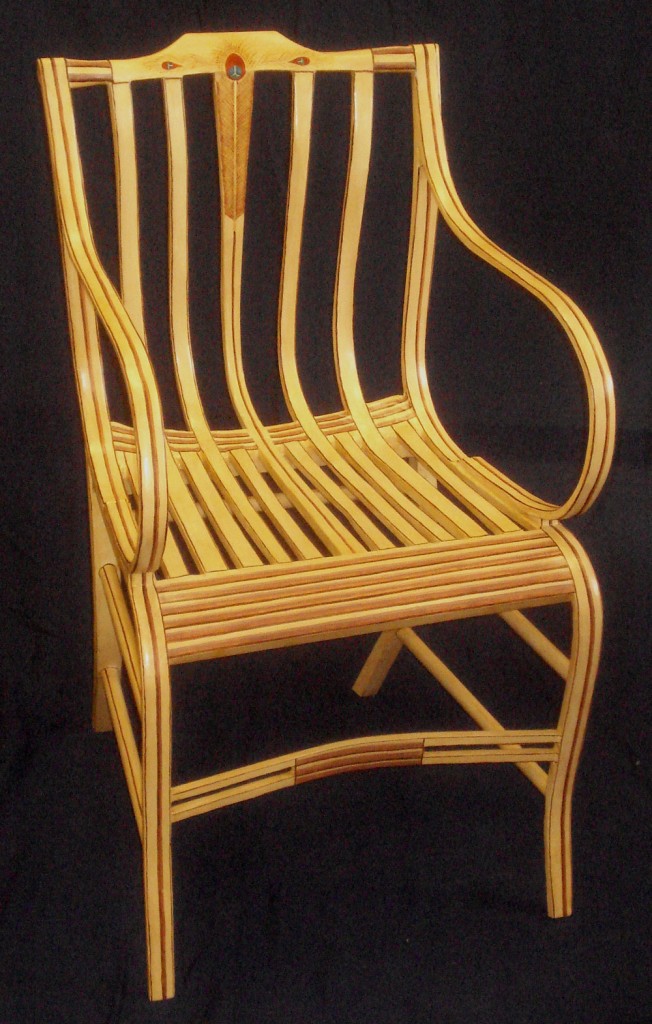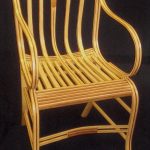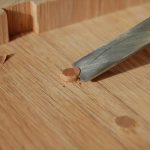We may receive a commission when you use our affiliate links. However, this does not impact our recommendations.
Of all the furniture of the 18th and 19th centuries, the work of Boston chair maker Samuel Gragg (1772-1855) is some of the most shocking to modern eyes. His elastic, steam-bent chairs are based on the ancient Greek “klismos” chair,” yet they have unexpected curves and a lightness that is contemporary.
There aren’t many Gragg chairs extant, perhaps a few dozen, so perhaps the only way most of us will ever get to sit in one is if we make it ourselves, which is exactly what Don Williams did during 2011.
Williams, senior furniture conservator at The Smithsonian’s Museum Conservation Institute (www.si.edu/mci), was able to examine, photograph and measure the only three known examples of Gragg’s “fully elastic” arm chair. He built three versions of these Gragg chairs using different methods and materials, including a traditional one using steam-bent oak, a version made using bent plywood lamination and a third using bamboo.
Williams has been documenting the construction processes for an article for an upcoming issue of American Period Furniture, the annual publication of the Society of American Period Furniture Makers (SAPFM). If you are even remotely interested in traditional American furniture, I encourage you to become a member of this organization (I am). The annual American Period Furniture alone is worth the price of membership, but you also get access to the vast knowledge and resources of its members through the organization’s forum and the ability to attend its events. Read more about being a member here.
As he built his chairs, Williams sent me updates on the process because he knew I’d be interested in some of the building techniques that were similar to Windsor chair-making. I also got to read a draft of Williams’s manuscript for American Period Furniture.
The chairs are an interesting combination of simple joinery and very tricky processes – the main leg/stile of the chair has two bends on a 6” radius that are a little more than a foot apart. Plus there are half-blind dovetails to attach the seat slats and delicate mortise-and-tenons for the back splats. Yet in most places Gragg used metal pins or screws to reinforce joints.
And somehow all 25 pieces of the chair – only six are straight – have to come together where none is square and most were tapered and swelled along two axes.
“If crisp rectilinear joinery is your furniture-making goal, building a Gragg chair just might not be your cup of tea,” Williams writes in his account of the construction. “There is almost no clean joinery layout, and much of the fitting and overall composition is improvisation. Rather than seeking precision or symmetry, you must strive for compositional and structural balance.”
The end result of Williams’s efforts is beautiful. But I knew it would be. What I wanted to know is this: How does the chair sit?
“As comfortable as it gets,” Williams writes of the nine-pound chair. “Miraculously, it is comfortable for everyone who sits in it, regardless of body configuration. I love it (at) 6’0″ 225 pounds. My intern Daniela, 5’3″ and eight months pregnant loves it. My woodworking pal Tom (at) 6’7″ loves it. Sorta like a universal version of my Eames chair, which is so comfortable for me that I fall asleep easily in it but makes smaller people ache.”
Williams’s efforts are the best kind of historical research in my opinion. There is only so much that we can learn by examining old books, old tools and old furniture. At some point the only way to deepen our understanding of historical forms is to rebuild them. That’s exactly what Williams has done, and the results will be well-worth reading when they are published in American Period Furniture. So stay tuned.
— Christopher Schwarz
Here are some supplies and tools we find essential in our everyday work around the shop. We may receive a commission from sales referred by our links; however, we have carefully selected these products for their usefulness and quality.
















What an incredible looking chair. It is the first chair that I have eveer seen showcased that didn’t make my old bones and back ache and creak on viewing. I really want to sit in that chair. I have never had any impulse to take up chair building (nor is there a novel just burning in me to be written) but this one has changed that. What do you think, Don? Can I get one built in less than four years?
Here is an interesting site which has some good information on Samuel Gragg’s chairs:
http://www.chipstone.org/SpecialProjects/Elastic/OpenElastic.html
Da*n that is gorgeous. I usually don’t leave compliments on projects but this chair is amazing!